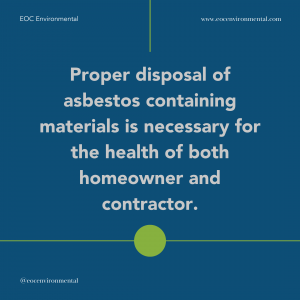
Asbestos occurs naturally and can be mined from the earth and its first use dates back at least 4,500 years to East Finland where it was used to strengthen earthenware pots, then Egypt, Persia, Rome, and finally to industrialized countries.
Although asbestos comes from all over the world, the main exporters are Russia, Kazakhstan, and China and was once mined from North America. Asbestos is found in large deposits or as a contaminant in talc and vermiculite. Large veins of chrysotile asbestos can be found within serpentine rock.

Asbestos was first used as a strengthening agent and then in blankets, napkins, and textiles for the use of its heat resistant properties. Post industrialization, it was used in many construction materials for the same properties. It can be found in automotive and construction materials and household goods such as:



Asbestos is hazardous when disturbed. The fibrils that make up the compound are microscopic and unable to be processed through our bodies. They embed themselves in our lungs when inhaled causing severe lung damage, mesothelioma, asbestosis, and other lung problems.
The toxicity of asbestos was first discovered in 1899 by H. Montague Murray but regulations were not enacted in the United States until the 1970s. While regulations were in place to limit the use of asbestos in materials, it was not banned completely and asbestos is still in use today in a limited capacity.
Most asbestos exposure was, and is, to the mine workers harvesting asbestos. In the United States, exposure is now most dangerous during building demolition and renovation due to the disturbance of asbestos containing materials.






If you are renovating or doing any demolition in your home, it is important to take precautions to protect yourself and other inhabitants by wearing protective gear. It is also a requirement that asbestos testing must be performed prior to any renovations or demolition that may disturb building materials. This law applies no matter the age of the home.